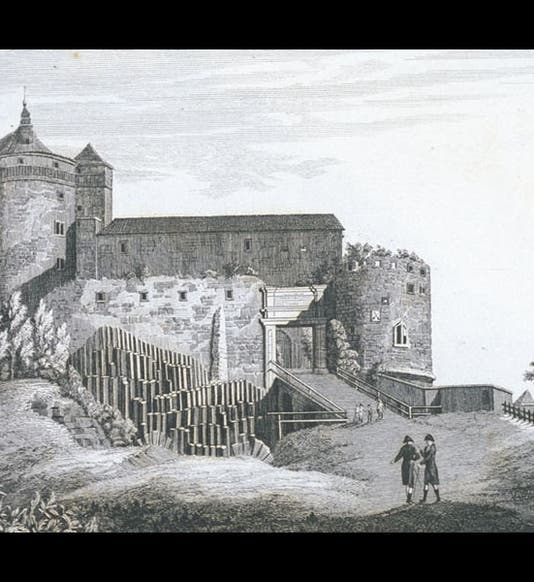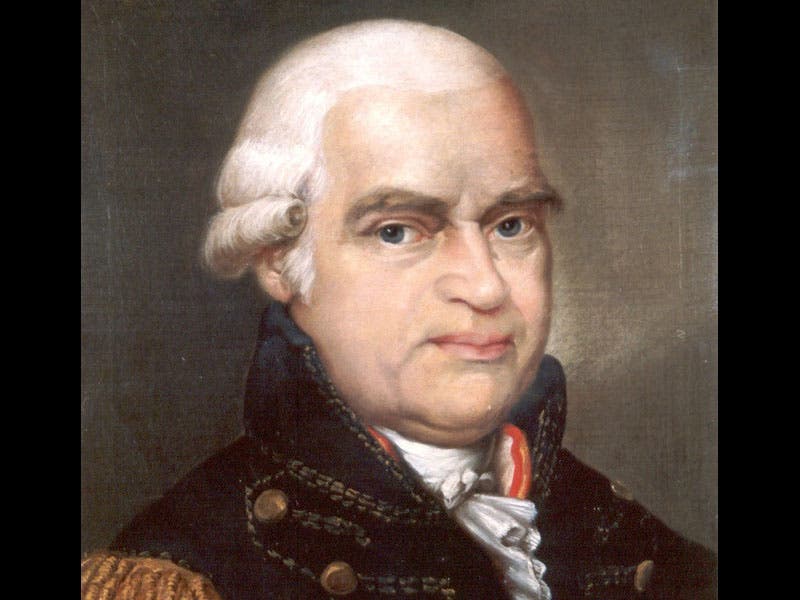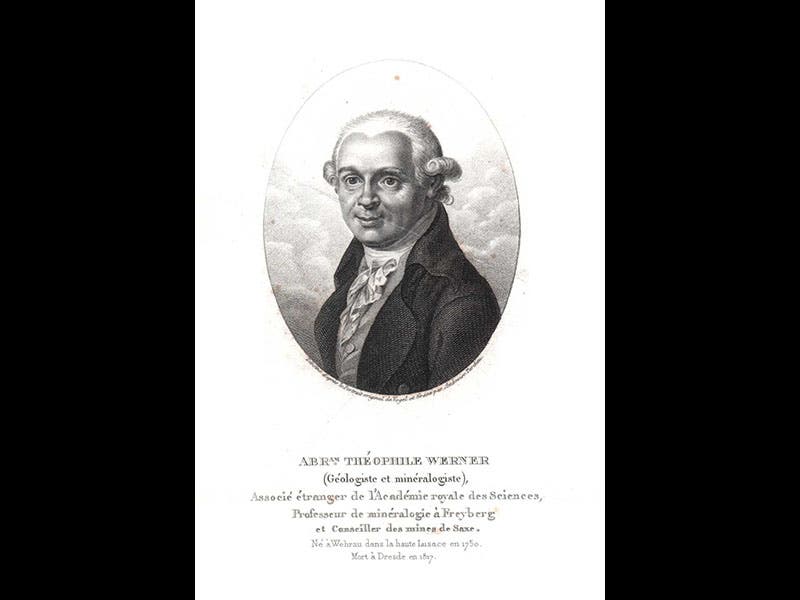Scientist of the Day - Abraham Gottlob Werner
Abraham Gottlob Werner, a German mineralogist, was born Sep. 25, 1749. Werner was a professor at the Mining Academy at Freiberg in Saxony, and he was intimately acquainted with the sequences of rock strata in eastern Germany. Werner wondered why rock formations are found in certain specific sequences, and to explain these, he proposed in the 1780s that all rock formations were deposited from water at a time when the earth was covered with a primordial ocean. As the waters slowly subsided and the chemistry of the ocean changed, different kinds of rock would be deposited on the surface in a specific order, with granite being the earliest rock laid down, followed by schists, gneisses, basalts, limestones, slates, sandstones, and finally surface soil and gravel. This hypothesis became known as Neptunism, because of its assumption that all rocks are deposited from water.
Other geologists proposed that basalt and granite are igneous rocks and were solidified from molten rock, but Werner, who had never seen an active volcanic region, rejected the idea; the only basalt he knew, at nearby Stolpen (see first image above), was found in layers, sandwiched between strata of limestone, and it was more logical to conclude that the basalt had precipitated from water, just like the limestone. The controversy over the origin of basalt would not be resolved until the 1830s, long after Werner’s death in 1817, and it would not be resolved in Werner’s favor.
There is a commemorative bust of Werner in a park in Freiberg (second image), and a nice portrait somewhere in the same city (third image). The portrait most often reproduced appeared in one of his books (fourth image), and makes him look goofy, but Werner was far from being a goofball. He and Linnaeus were the two most popular teachers in all of Europe in the 18th century, so he was clearly a master at pedagogy, and he really did know his minerals inside and out. Had he lived in Scotland, or Italy, he probably would have reached quite different conclusions about the origins of crystalline rocks such as basalt.
Dr. William B. Ashworth, Jr., Consultant for the History of Science, Linda Hall Library and Associate Professor, Department of History, University of Missouri-Kansas City. Comments or corrections are welcome; please direct to ashworthw@umkc.edu.








![Using an astrolabe to measure the depth of a well, woodcut in Elucidatio fabricae vsusq[ue] astrolabii, by Johannes Stöffler, 1513 (Linda Hall Library)](https://assets-us-01.kc-usercontent.com:443/9dd25524-761a-000d-d79f-86a5086d4774/a998eb50-55d2-4a88-ace2-a50aa5fa86e7/Stoffler%201.jpg?w=210&h=210&auto=format&fit=crop)

